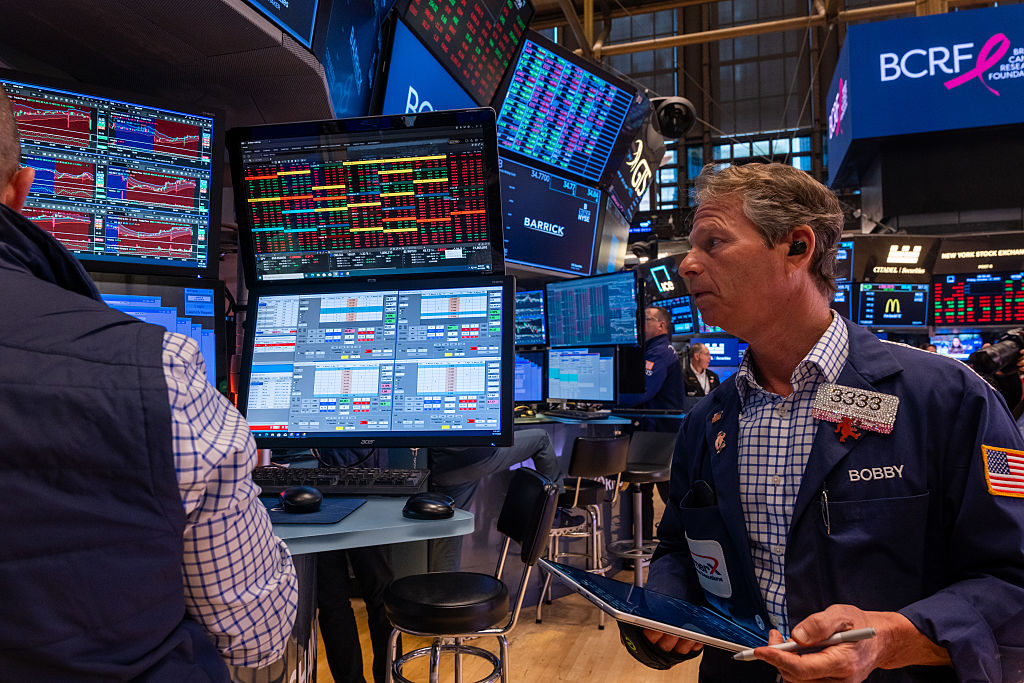How to invest in helium as the price heads higher and higher
Helium gas is a highly versatile commodity in short supply. The bull market is far from over: we have had the aperitifs, but the dancing is still to come, says Dominic Frisby


Every few years a bull market comes along in a niche, but strategically important commodity. I’ve seen it in cobalt, lithium, graphite, phosphate, uranium, rare-earth metals and many others. Get the timing right and you can make a great deal of money.
The story is almost always the same. Years of underinvestment has led to a shortage of supply of the commodity. Government stockpiles are exhausted. And now, suddenly, the commodity is essential to some new technology. Cue bull market. The trick is to identify tomorrow’s commodity today.
With this in mind, I have, for a couple of years now been beating the drum about helium. I first recommended it on these pages in late 2018. Now the party is getting started. We have had the aperitifs – but the dancing is still to come.
MoneyWeek
Subscribe to MoneyWeek today and get your first six magazine issues absolutely FREE

Sign up to Money Morning
Don't miss the latest investment and personal finances news, market analysis, plus money-saving tips with our free twice-daily newsletter
Don't miss the latest investment and personal finances news, market analysis, plus money-saving tips with our free twice-daily newsletter
Helium has a multitude of uses beyond the one we all know it for: balloons. It is inert and has the lowest boiling point of any element. That is why it is used as a coolant for nuclear reactors and magnetic resonance imaging (MRI) machines. It is also a suitable refrigerant in cryogenics research.
It is mostly used in digital technology, however, notably in high-capacity hard drives in data centres (helium-filled drives boost capacity by 50% as the gas takes up less space than air) and also in the production of barcode readers, computer chips, semiconductors, LCD panels and fibre-optic cables.
Qatar and the US are the top producers, but supply is in decline. Roughly 20% of global demand was met by the US selling off its national reserves. With those reserves now gone, how will the demand be met?
Copycats are coming to market
Since I highlighted the topic my preferred helium play has been Canadian micro cap Desert Mountain Energy (Vancouver: DME); it was trading around C$0.20 in 2018. It’s done astonishingly well and today sits at all-time highs around C$4.50.
It has made what appears to be a major discovery in Arizona (still unconfirmed) and is getting ready to move into production later this year. What was a micro cap now has a market value of around C$300m.
In phase two of a bull market, copycats emerge. The fundamentals for helium investment are strong and they will remain strong until the explorers turn any discoveries they make into actual production, but there are now several ways to bet on the gas. We still have phase three of the bull market – the mania – to come.
I still like Desert Mountain Energy as a way to play this. If production goes to plan (there’s that word “if” again) then this could be a billion-dollar company. We should see plenty of news flow in the coming weeks. We know its latest drilling has encountered helium. We are waiting to find out how much.
Not far behind in terms of market value is London-listed Helium One Global (Aim: HE1), which I have also mentioned in MoneyWeek before. It has done very well too, going from 4p when it listed late last year to 27p last month; it has since fallen back to around 22p, giving it a market cap of £135m.
The group’s assets are promising, but the location, Tanzania, is not as convenient for Silicon Valley as Desert Mountain Energy’s Arizona. North America accounts for 60% of global demand for helium.
Looking further down the chain at some spicy smaller stocks that could rocket, we now have plenty of options. Many of them listed only in the last few months, mostly in Canada, so to play this you will need a broker who deals in Canadian and, to a lesser extent, Australian stocks.
We have: First Helium (Vancouver: HELI), Avanti Energy (Vancouver: AVN), Royal Helium (Vancouver: RHC), Blue Star Helium (Sydney: BNL), Global Helium Corp (Toronto: HECO), Helium Ventures (London’s Acquis Stock Exchange: HEV) and Imperial Helium (Vancouver: IHC), which describes itself as private on its website, even though it has been trading on Canada’s TSX Venture Exchange since May.
The pick of the new bunch
Imperial Helium, with a market value of C$27m including C$13m in cash, is my choice: progress on the ground appears to be better than it is with the website.
Imperial has “spudded” the first of two appraisal wells it plans to drill at its Steveville property in southeastern Alberta on schedule. That is to say, drilling has begun. It will now continue to a depth of 2,000 metres, followed by testing, and we should see the results in August. The aim is to confirm helium concentrations first discovered in 1940.
Imperial has also started road construction at the property, which lends credence to its stated goal that it will be producing and selling helium by next year to sell into “ready markets partnering with commercial gas buyers”. I own shares in the group.
Get the latest financial news, insights and expert analysis from our award-winning MoneyWeek team, to help you understand what really matters when it comes to your finances.
Dominic Frisby (“mercurially witty” – the Spectator) is as far as we know the world’s only financial writer and comedian. He is the author of the popular newsletter the Flying Frisby and is MoneyWeek’s main commentator on gold, commodities, currencies and cryptocurrencies. He has also taken several of his shows to the Edinburgh Festival Fringe.
His books are Daylight Robbery - How Tax Changed our Past and Will Shape our Future; Bitcoin: the Future of Money? and Life After the State - Why We Don't Need Government.
Dominic was educated at St Paul's School, Manchester University and the Webber-Douglas Academy Of Dramatic Art.
You can follow him on X @dominicfrisby
-
 Top 10 locations for buyers and renters revealed
Top 10 locations for buyers and renters revealedLondon is crowned as the most popular location for renters and buyers, despite rising costs. But where else are house hunters heading to?
-
 Making financial gifts to loved ones? Write it down or risk giving an IHT bill too
Making financial gifts to loved ones? Write it down or risk giving an IHT bill tooGiving gifts can be a way to pass on wealth and reduce the inheritance tax bill on your estate but do it wrong and you could leave family and friends more than they bargained for.
-
 Leading European companies offer long-term growth prospects
Leading European companies offer long-term growth prospectsOpinion Alexander Darwall, lead portfolio manager, European Opportunities Trust, picks three European companies where he'd put his money
-
 How to harness the power of dividends
How to harness the power of dividendsDividends went out of style in the pandemic. It’s great to see them back, says Rupert Hargreaves
-
 Why Trustpilot is a stock to watch for exposure to the e-commerce market
Why Trustpilot is a stock to watch for exposure to the e-commerce marketTrustpilot has built a defensible position in one of the most critical areas of the internet: the infrastructure of trust, says Jamie Ward
-
 Tetragon Financial: An exotic investment trust producing stellar returns
Tetragon Financial: An exotic investment trust producing stellar returnsTetragon Financial has performed very well, but it won't appeal to most investors – there are clear reasons for the huge discount, says Rupert Hargreaves
-
 How to capitalise on the pessimism around Britain's stock market
How to capitalise on the pessimism around Britain's stock marketOpinion There was little in the Budget to prop up Britain's stock market, but opportunities are hiding in plain sight. Investors should take advantage while they can
-
 London claims victory in the Brexit wars
London claims victory in the Brexit warsOpinion JPMorgan Chase's decision to build a new headquarters in London is a huge vote of confidence and a sign that the City will remain Europe's key financial hub
-
 Reinventing the high street – how to invest in the retailers driving the change
Reinventing the high street – how to invest in the retailers driving the changeThe high street brands that can make shopping and leisure an enjoyable experience will thrive, says Maryam Cockar
-
 The consequences of the Autumn Budget – and what it means for the UK economy
The consequences of the Autumn Budget – and what it means for the UK economyOpinion A directionless and floundering government has ducked the hard choices at the Autumn Budget, says Simon Wilson
